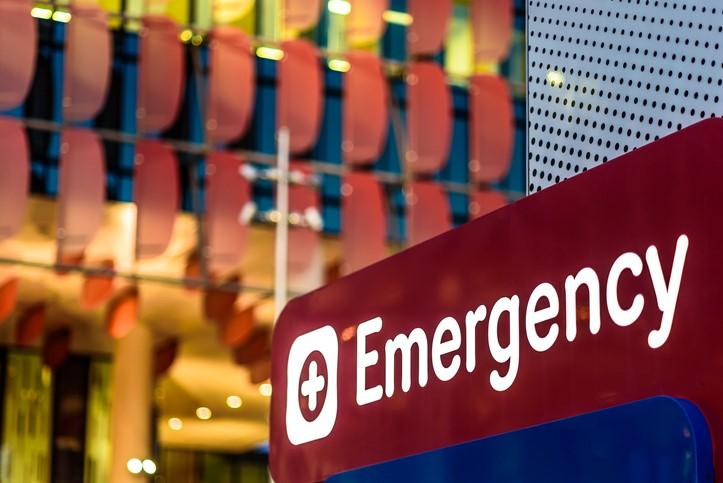Amid COVID-19 pandemic-related healthcare disruptions, the likelihood of in-hospital death rose significantly for six time-sensitive, non-COVID conditions and varied by urban or rural setting, finds a study published yesterday in JAMA Network Open.
A team led by researchers from the Agency for Healthcare Research and Quality compared the odds of in-hospital death among adults with non–COVID-related heart attack, hip fracture, gastrointestinal bleeding, pneumonia, sepsis, and stroke at 3,813 US hospitals from March 2020 to December 2021 compared with January 2017 to March 2020. They looked at differences by month and for COVID-19 community transmission.
A total of 50.3% of patients were men, 38.5% were ages 18 to 64 years, 45.0% were 65 to 84, and 16.4% were 85 or older.
35% higher odds of death from sepsis in rural areas
Among 18.6 million hospitalizations, the chances of in-hospital death among sepsis patients rose 27% from before to during the pandemic at urban hospitals (odds ratio [OR], 1.27) and 35% at rural hospitals (OR, 1.35). The likelihood of in-hospital death also rose for pneumonia patients in both urban (OR, 1.48) and rural (OR, 1.46) settings.
Increases in death from sepsis and pneumonia had a dose-response link with community COVID-19 transmission for hospitals in both rural (sepsis, 22% vs 54%; pneumonia, 30% vs 66%) and urban (sepsis, 16% vs 28%; pneumonia, 34% vs 61%) areas.
The pandemic may have intensified urban-rural disparities in treatment and outcomes for some of the time-sensitive conditions.
The risk of death among heart attack patients increased 9% (OR, 1.09) at urban hospitals and fluctuated according to community COVID-19 transmission. The odds of death among patients with hip fracture rose at rural hospitals (OR, 1.32) and among those with gastrointestinal bleeding at urban locations (OR, 1.15). There was no significant change in risk of death from stroke in either setting.
Delayed care, resource constraints, and emergency department crowding by COVID-19 patients likely contributed to the worse outcomes, the authors said. "The pandemic may have intensified urban-rural disparities in treatment and outcomes for some of the time-sensitive conditions," they wrote. "Mobilizing strategies tailored to the different needs of urban and rural hospitals may help reduce the likelihood of excess deaths during future public health crises."
Analysis didn't account for patient transfers from rural hospitals
In a commentary in the same journal, John Westfall, MD, MPH, of the DARTNet Institute in Colorado, called the analysis of rural hospitals incomplete because the researchers didn't account for patient transfers from rural hospitals, which are a common treatment decision and can result in bias against these hospitals if not considered.
"Patients admitted to a rural hospital may be discharged from that hospital, or they may be transferred to another hospital, often an urban hospital for more specialized care," he wrote. "Patients transferred from a rural hospital are not the same as patients admitted and cared for at a rural hospital."
Data also show that patients transferred from rural hospitals tend to be younger and healthier than those who remain, Westfall said.
Patients transferred from a rural hospital are not the same as patients admitted and cared for at a rural hospital.
"Older patients with more comorbid conditions may not derive the same marginal benefit from an urban tertiary care hospital as a younger patient, and hospitalization in an urban hospital may include age-related risks associated with additional testing, invasive treatments, and iatrogenic [treatment-related] injury," he wrote. "Older patients may choose to stay in a rural hospital to be near family and friends."
Westfall added that there may be other reasons for the greater increase in death from sepsis in rural hospitals. For example, "rural hospitals may have had more constrained resources and a much smaller workforce without the capacity to expand as quickly as urban hospitals and may have been unable to transfer patients to urban centers for advanced care," he wrote.
"Decisions about who and when to transfer patients from rural hospitals may have been influenced by physician and patient concerns about exposure to COVID-19 at an urban hospital, with patients choosing to stay in a rural hospital rather than be transferred," he added.
Transfer from a rural to an urban hospital, he said, is a big decision for patients, families, and rural hospitals: "Interhospital transfer is a unique rural treatment and deserves full consideration in health care services research."



















